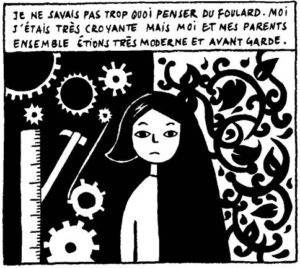women with a little w
My favorite reading from this week’s selection was Chandra Talpade Mohanty’s piece “Under Western Eyes: Feminist Scholarship and Colonial Discourses”. In this piece, she thoroughly unpacks the problematic ideals Western feminists hold towards how to relate Third World Women. The root of this issue is generalization, attempting to create one “Women” identity that exists in one vague, ahistorical experience that positions women as subordinate. She notes that this concept of Women (capital W) is constructed. Lowercase “women” is real, noting history and specificity that lives in every woman’s identity. This reminded me of Shange’s use of lowercase letters. However, Shange’s use of the lowercase creates the effect of collective, something that blurs specificity and singularity. Here, the lowercase is used to give a sense of grounding, moving away from a “high concept” version of the word rather than representing the women who live in it.
In the piece, Mohanty details how Western feminists dangerously characterize Third World Women as “sexually restrained”, “domestic”, “poor”, “family-oriented”, “tradition-bound”, and “uneducated”. In contrast, the Western feminist positions herself as “modern”, “educated”, and “having control over her body and sexuality” (pg.7) The ahistorical nature of dichotomy erases the specificity that exists in every experience of women, that is deeply rooted by their economic, racial, ethnic, religious, and social position. The characteristics given to each “group” lives and effects the other. This dichotomy positions the West in the position of savior, a patriarchal imperialistic figure to “save” Third World Women.
One example of how generalization limits our deeper understanding of Third World Women’s varied experiences is through how the West views the Veil. Often, the West asserts that the veil is inherently misogynistic, a symbol of how the Middle East controls women. However, Mohanty points out how the veil varies from culture to culture. For example, the veil was used in Iran in 1979 as a form of protest against Western colonization and in solidarity with working class Iranian women. This example reminded me of the political comic book, “Persepolis”.In iir, Marjane Satrapi tells the story of her childhood in Iran during and after the Islamic Revolution. Due to the revolution, she began to question what it said about her that she chose to wear or not wear the veil.
This piece made me reflect in the ways that I almost instinctively fall into the trap of using the “solutions” of our own oppressions onto Third World Women. As a black woman, I struggle to even see myself as living in a “Western” ideology, since this ideology is assumed to be white. However, as a member of Western society, I have internalized some of these paternalistic and imperialistic views, and also do have a hand in the oppression of Third World Women.
Why is it so difficult to resist the capital w “Women”? Perhaps it comes with recognizing there is so much work, listening, education, and time we must dedicate in order to fully involve ourselves in this specificity that Mohanty calls for. By maintaining the idea of “Women” as a singular ahistorical identity, we not only are able to sidestep the work of fully unpacking our role in other women’s oppression, we also able to sidestep work that we perhaps would not benefit from.



Comments ( 2 )